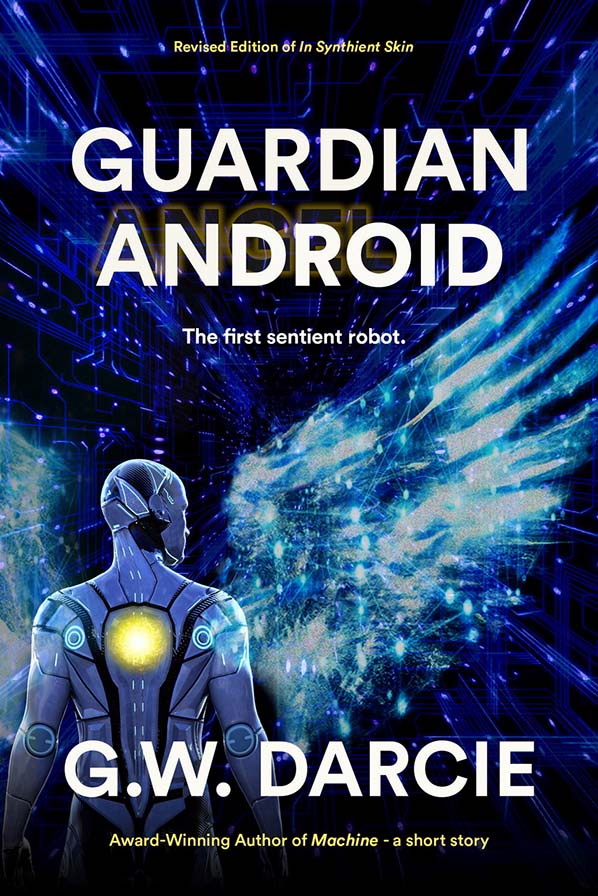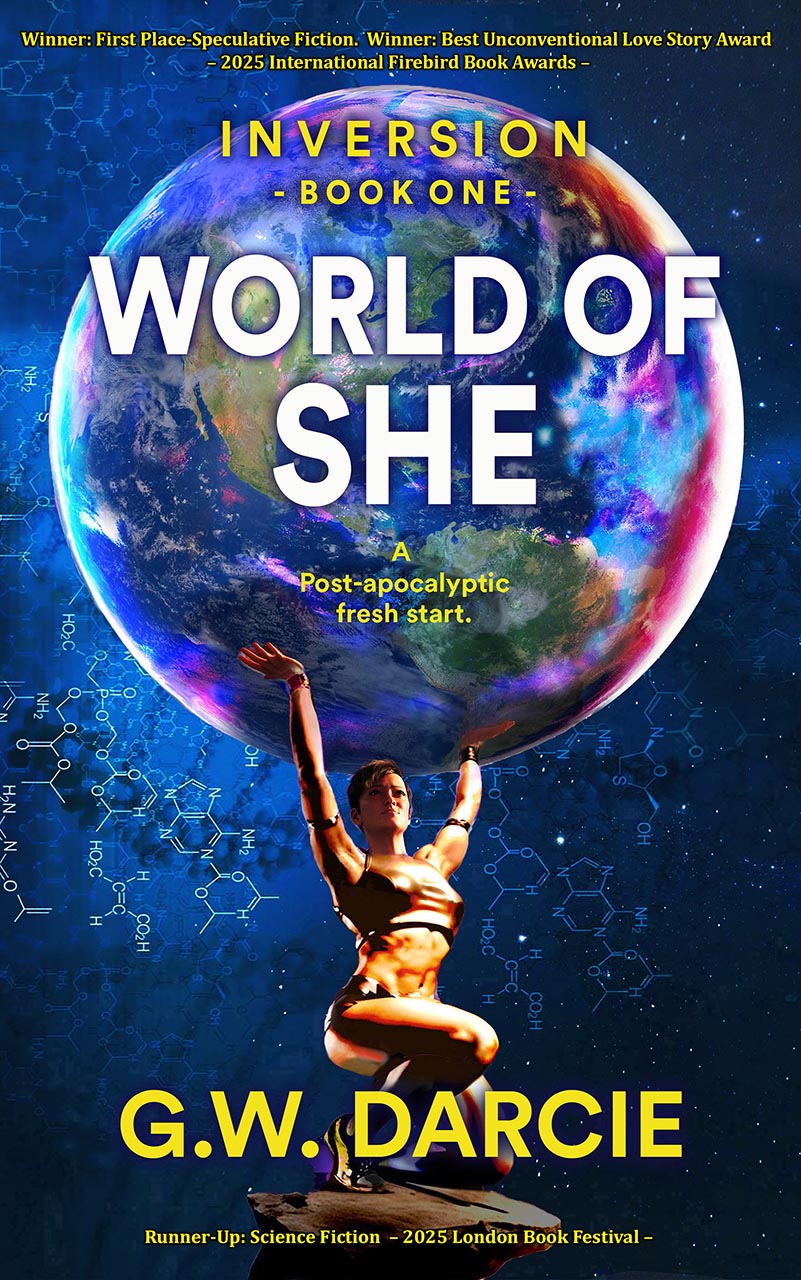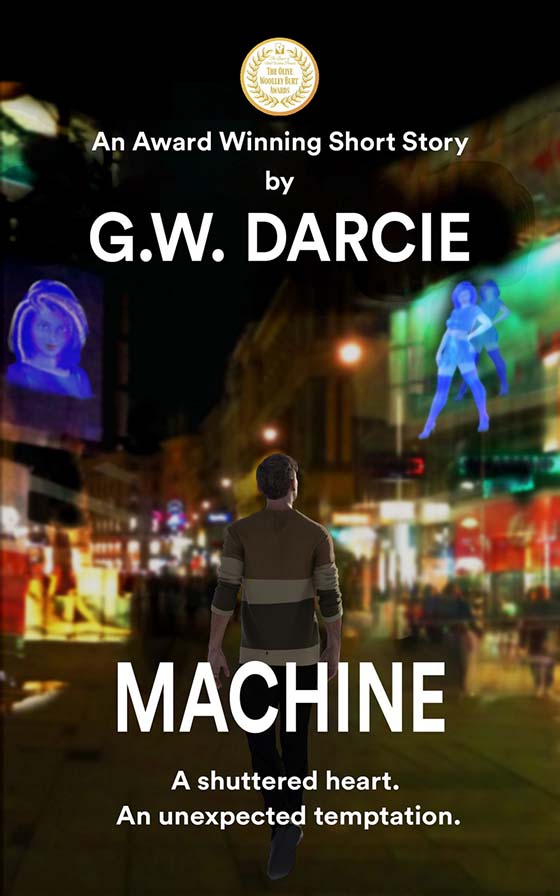G.W. Darcie
Award-winning author
Heartfelt Speculative Fiction
Books

Guardian Android
For fans of I Robot, and the Murderbot Diaries. Action-packed, conceptually rich, and deeply human, this story is a must-read for those interested in robots and AI.

Multi-Award-Winning
WORLD OF SHE
What if women were bigger than men? Book One of the unique Inversion series turns the gender world upside down, offering fresh insights into the power dynamics that shape human relationships. – Adult fiction.

BURDEN OF SHE
Return to the world of She in Book Two of G.W. Darcie’s gripping Inversion series. Burden of She reveals this intriguing world through Kaya’s eyes, as she gains insights into the hard lessons of life and love.

MACHINE – a short story
An award-winning short story that explores the limitations of technology in fulfilling our human needs. Join my VIP readers group to get your free copy. – Adult fiction.
- Open Invitation -
Get early access to my new books
Free!
Become an ARC reader
What is an ARC reader? Someone who reads free copy of a story before its public release and submits an honest online review. Reviews are the lifeblood of any new release.
Become a Beta reader
What is a Beta reader? Someone who reads a pre-publication draft of a story and gives honest feedback about their impressions and reactions. In other words, a partner in the creative process. In exchange for your help, you’ll receive an in-book acknowledgement, a free paperback copy of the book when it is published, and my enduring gratitude.
